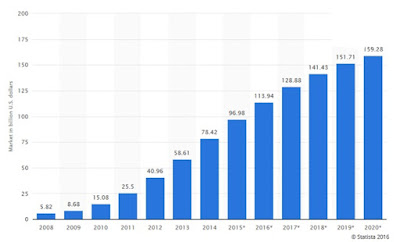Twitter Feed
Crisis Response Using Cloud Computing
Cloud computing is more than servers and storage. In a crisis situation it can actually be a lifesaver. BlackBerry, in fact, has just become the first cloud-based crisis…
Cloudy Thinking and Digital Transformation
(Originally posted on the Engility Corporation Blog) There’s a lot to gain from cloud computing, but success requires a thoughtful and enterprise focused approach. Cloud computing decouples data and…
Blockchain Business Innovation
Is there more than bitcoin to blockchain? Absolutely, because today’s blockchain is opening up a pathtowards the delivery of trusted online services. To understand this statement, you need…
How Quantum computing with DNA storage will affect your health
By Guest Contributor: Taran Volckhausen, Contributing Editor at Vector (https://www.indexer.me) Moore’s Law, which states that processing speeds will double every two years as we cram more and more silicon…
36 Shades of Hybrid IT
Photo credit: Shutterstock Everyone has heard of the 50 Shades of Grey. But do you know the “36 Shades of Hybrid IT”? These shades are a new way of describing…
Digital Transformation Driven by ITaaS
Photo credit: Shutterstock When executing an effective digital transformation strategy, management is tasked with placing the right workload into the most appropriate IT environment. This represents a shift from…
IBM Interconnect 2017: Cloud, Cognitive and Data!
A couple of weeks ago while attending IBM Interconnect 2017 I had the awesome opportunity to participate in the IBM Interconnect 2017 Podcast Series with Dez Blanchfield. I not only…
The BYOD Problem
Everyone wants their device of choice right there next to them 24/7. To an employer, however, that smart device is nothing more than a dagger posed to rip apart every…
Both Sides of Enterprise Mobility
Photo credit: Shutterstock Enterprise mobility has become table stakes in the world of business. The ability to access current information at any time, from anywhere, on any device has really…
Cloud Computing Forensics Readiness
Photo credit: Shuterstock In today’s globally connected world, data security breaches are bound to occur. This, in turn, increases the importance of digital forensic readiness, or the ability to access…
- Enable cloud service arbitrage based on cost, performance or operational need;
- Help companies migrate operations to the cloud and assist with staff augmentation and training;
- Provide cloud service auditing and SLA monitoring services;
- Help in focusing and managing organizational cloud service demand;
- Provided toolsets to assist in the migration and integration of enterprise applications; and
- Help in change management and the selection and integration of other managed services.
By automating and operationalizing the governance of cloud services, CSBs can efficiently multi-source services and augment them with third party metering and monitoring. Using CSBs, organizations also accelerate their transition to hybrid IT models. This marketplace is typically segmented type of services: cloud brokerage and cloud brokerage enablement, wherein cloud brokerage enablement is further segmented into internal and external brokers. When used internally, cloud enablement platforms helps enterprises adopt the new hybrid IT and multi-sourced operating model. By building organic expertise, companies can personalize IT service consumption and unify
IT service delivery through the use of a corporate self-service store, a dynamic service marketplace, and continuous delivery. This centralized, supply chain approach unifies the order, execution, and management of multi-sourced solutions across legacy and cloud resources, by centrally delegating and tracking execution.
(This post was brought to you by IBM Global Technology Services. For more content like this, visit Point B and Beyond.)
( Thank you. If you enjoyed this article, get free updates by email or RSS – © Copyright Kevin L. Jackson 2016)
Cloud Computing
- CPUcoin Expands CPU/GPU Power Sharing with Cudo Ventures Enterprise Network Partnership
- CPUcoin Expands CPU/GPU Power Sharing with Cudo Ventures Enterprise Network Partnership
- Route1 Announces Q2 2019 Financial Results
- CPUcoin Expands CPU/GPU Power Sharing with Cudo Ventures Enterprise Network Partnership
- ChannelAdvisor to Present at the D.A. Davidson 18th Annual Technology Conference
Cybersecurity
- Route1 Announces Q2 2019 Financial Results
- FIRST US BANCSHARES, INC. DECLARES CASH DIVIDEND
- Business Continuity Management Planning Solution Market is Expected to Grow ~ US$ 1.6 Bn by the end of 2029 - PMR
- Atos delivers Quantum-Learning-as-a-Service to Xofia to enable artificial intelligence solutions
- New Ares IoT Botnet discovered on Android OS based Set-Top Boxes



